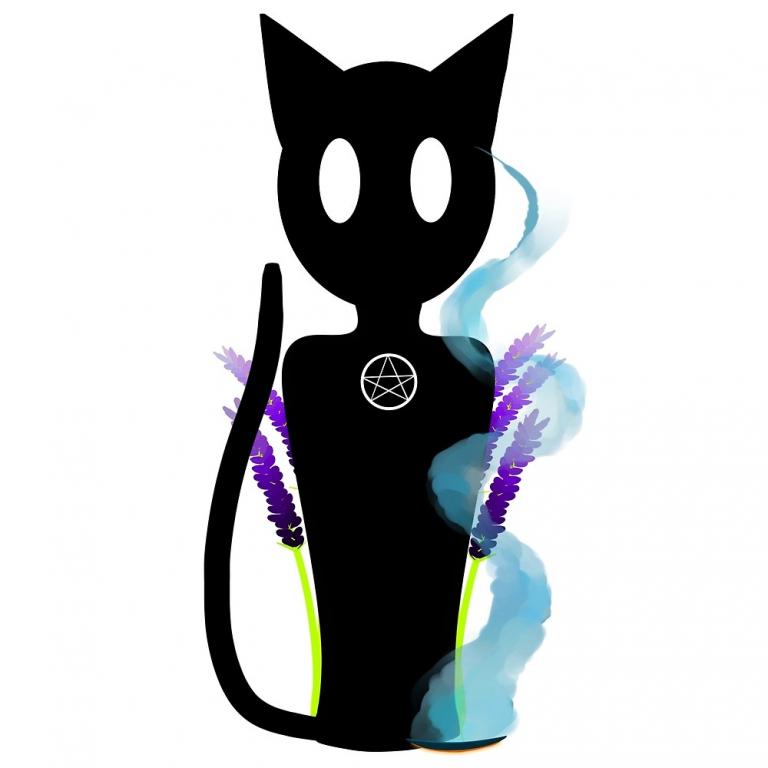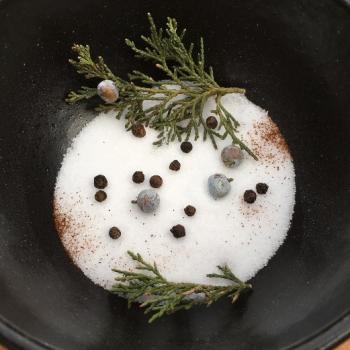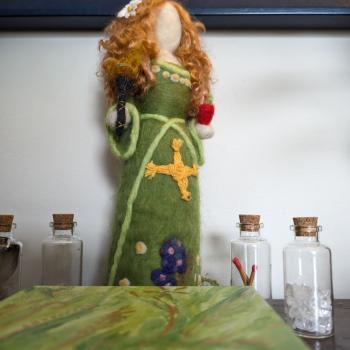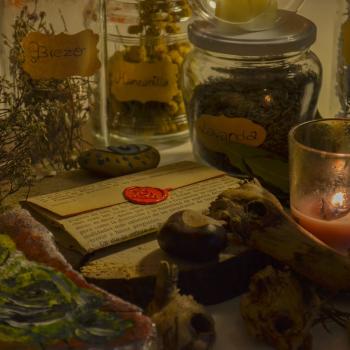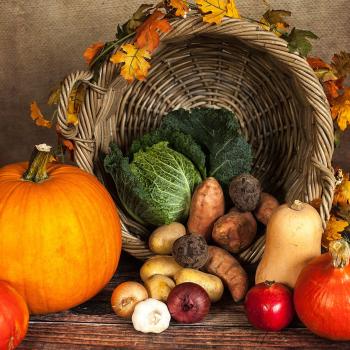There is nothing like walking into my yard on a Spring afternoon to violets peeking through the growing green with smatterings of purple and white. It fills me with so much pleasure to see the early blooms of April in Michigan. It gives me hope that the cold, gray weather is coming to an end. And when I fill my basket with violets (while leaving healthy plants and blooms behind) there is a lot I can do with the blossoms.
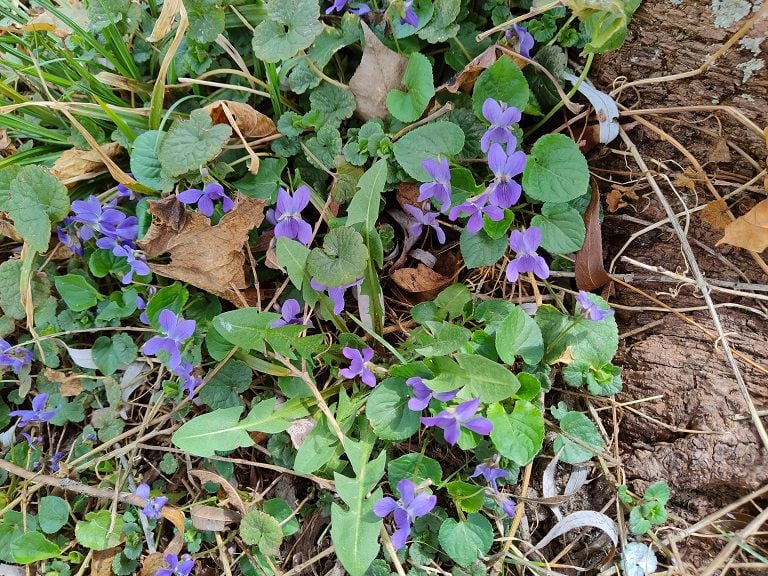
Violets: A Brief Introduction
Wildflowers are “weeds” to some but to me, they are wonderful additions to the yard. Violets are no exception. They have a wide variety of uses as food, medicine, and magick. So, let’s get to know this low-growing plant you will find in your grass that makes an appearance as the Winter chill is replaced by Spring breezes.
The Common Blue Violet (Viola sororia) is native to central and eastern North America. These little beauties begin sprouting up in lawns, along the roadside, within sidewalk cracks, and beside forest paths in late March/Early April. There is a variation (cultivar) that is white with purple streaks that will grow alongside the typical purple/blue. And the leaves and blossoms of the Common Blue Violet are edible.
Identification
There are many species of violet. In addition to Viola sororia, there is Viola oderata, (Sweet Violets). You can identify these by their light sweet scent. However, it is most likely the flowers growing in your yard are the Common Blue variety. But whether you are foraging from your yard or at another location, it is always good to know how to identify the plant so you are 100% sure before you use them.
Common Blue Violets have a basal rosette (a crown of leaves radiating from a stem) of toothed, heart-shaped leaves, and drooping flowers with five petals that do not produce seeds. The blossoms are blue, purple, and white.
There is a yellow variety that some people might come across when foraging. It is important to note that Common Violet does have a look-alike that is poisonous. Ficaria verna, also known as lesser Celandine or Pilewort. While the yellow flower of this plant looks different from the yellow violet, the basal leaves are very similar. So, if you are foraging and you come across leaves you believe are violets, wait until the flowers bloom to be certain of their identification.
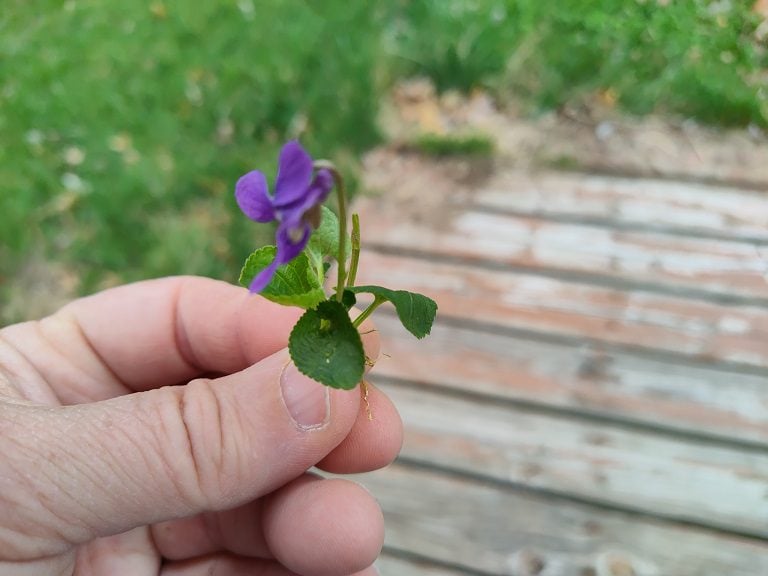
Medicinal Uses
There are a number of ways to use violets. They are a soothing herb with a gelatinous (mucilaginous) consistency. Violets have antioxidant properties which means they are a great source of Vitamins C and A. They are also anti-inflammatory which means they can support the body when dealing with discomfort, pain, swelling, etc.
Violets are helpful for coughs and sore throats due to colds, flu, and allergies by infusing them into a tincture, syrup, etc. They can be used topically in infused oil, balm, or lotion for rashes and other skin irritations, eczema, dry skin, bug bites, and varicose veins.
Violet is also said to be helpful for headaches, to calm nerves, ease emotions, and aid in achieving restful sleep when enjoyed as a soothing cup of tea.
Violet Blossom Infusion (Herbal Tea)
1 Cup of Boiling Water
2-3 Tsp Violet Blossoms (fresh or dry)
Pour the water over the flowers. Allow the violets to steep for 5-10 minutes. Strain and enjoy.
Violet Leaf Oil Infusion
1 cup Coconut Oil
1 Cup Violet Leaves
1/2 Cup Violet Blossoms
Clean, dry lidded canning jar
Fill the canning jar with the leaves and flowers. Pour the coconut oil over the plant material until covered to just above (add more oil if necessary). Put the lid onto the jar. Give a gentle twist, shake to stir the oil and violets. Place in a sunny spot for two weeks. Strain the flowers and leaves. Use topically as needed.
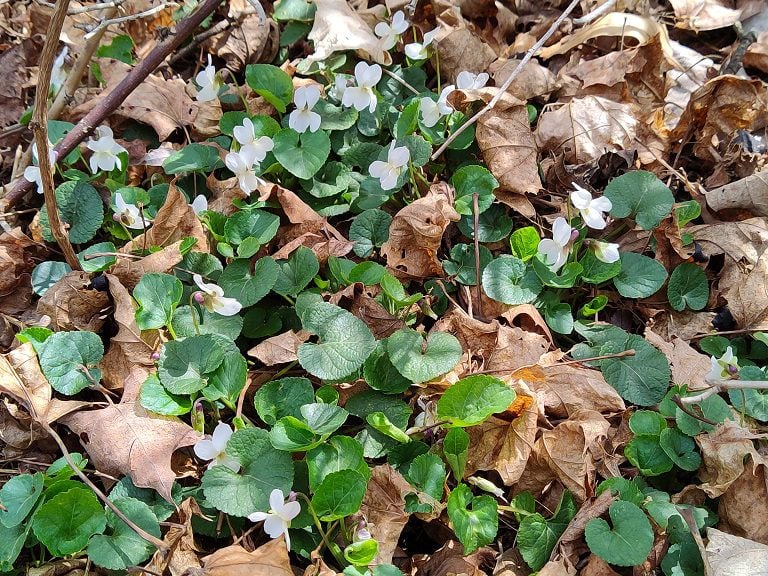
Violets As Food
Since these little flowers are high in vitamins, they make a great addition to salads or nourishing soups. Violets make an attractive decoration for cakes, cupcakes, and cookies. Or, you can use them in a baked recipe such as muffins. You can make a simple syrup with violets to add to lemonade or iced tea. Here is an easy recipe:
Violet Simple Syrup
- 1 cup Sugar
- 1 cup water
- 1/2 – 1 cup violet blossoms (stems removed) loosely packed in a lidded canning jar.
Bring water to boil in a small saucepan.
Pour the hot water over the blossoms.
Leave the flowers to steep for several hours.
Strain flowers from water into a double boiler.
Heat over low temperature and add sugar.
Stir until the sugar is dissolved.
Pour into a lidded glass jar.
Keep in the refrigerator until used.
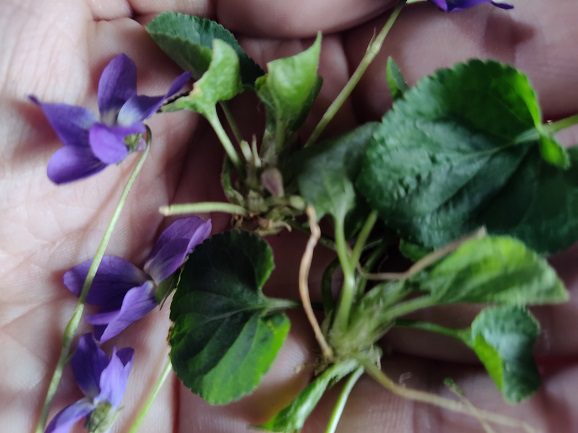
Violets in Magick
Tiny though they may be, these flowers are powerful aids in magickal workings. They are useful for spiritual growth, protection, healing, faithfulness, love, and glamour. They are also associated with psychic abilities, dreams, and visions.
- Wear violet in a small muslin bag as an amulet of protection.
- Place them beneath your pillow for dreams and visions.
- Allow them to grow near your door to ward off evil.
- Drop the blossoms in a ritual bath for healing.
As you can see, there is a multitude of ways that Common Violets can aid you in your life. And it is easy to come across them. Ask these lovely plants to aid you as a spirit ally, then see where your intuition and creativity take you.

